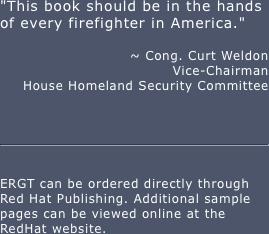 |
|||



Works of Non-Fiction
Some stories you tell because you want to, because they delight and entertain. Other stories need to be told. With a great deal of my life spent involved with emergency preparedness and response, I had amassed a body of experience that had a growing relevance to the threats facing our homes and schools. Our nation suffers under a growing burden of uncivil, abusive behavior that all too often leaves victims scarred or driven to self-destruction. When these awful events splash across our headlines the one thing I hear is "what can we do?"
The books below were written, for citizens and emergency responders respectively, to share some of the insights and experience I've gathered in my career. They have been adopted as textbooks in venues that include the FBI National Academy, the Federal Law Enforcement Training Center and the US Army Hazardous Devices School.
Like most Americans, I have been horrified to watch the relentless rise of violent crime in our nation. From school and theater shootings to horriffic home assaults and murders, I could not have imagined an America where words like cannibal attack or beheading had modern relevance, or where girls were stolen and improsoned for years on end in suburban dungeons. Yet today, that and more are all part of our daily news.
Despite this torrent of violence, nobody is discussing real-world answers and instead are locked in political debates that have not nor will not ever lead to an end to all this crime. Authorities and pundits alike are more interested in rhetoric than reason, in driving politics and TV ratings rathen than explaining things in clear, simple terms.
This led me to write Brace For Impact for the average citizen seeking to avoid or evade the impact of violent crime in our crazy, modern world. It presents lessons drawn from the military and law enforcement world in a way that anybody can understand and apply to have a meaningful impact on their safety.
The new book is not a "how to fight" book; we have plenty of those and sadly, many of them are written with a "my way is the only way" style. It takes a more practical look, examining the frequency and severity of these crimes in a way that can help you realistically understand the possible threat to yourself, your loved ones, your workplace. It emphasizes strategies to avoid being targeted by violent criminals -- after all, who wants to wage a fight we can more easily avoid in the first place? It also looks at our increasingly out-of-whack justice system and how things you do to defend yourself may expose you to criminal and civil liability. If you are counting on somebody else to save you in your time of need, or think that your actions to save yourself will be viewed as clearly as you see them, you need to read this book.
With the generous support of law enforcement and paramedic personnel as well as teachers, administrators and other professionals, this book distills a wealth of awareness, avoidance and yes, some resistance options into clear, clean language that will help you choose options that fit your lifestyle, age and physical capabilities. You don't have to be Chuck Norris to be safer right now, you just need to be a little smarter than the people around you.
THE EMERGENCY RESPONDER'S GUIDE TO TERRORISM
In the wake of the horrific events of 9-11 I authored The Emergency Responders Guide to Terrorism, a comprehensive textbook for special operations, emergency response and law enforcement units confronted with explosive, chemical, biological or radiological terrorist weapons of mass destruction.
The book met with an amazing reception. Agency adoptions span the gamut of Federal, state and local agencies around the world, to include the FBI, DEA, BATFE, CIA and US Secret Service. Other notable adoptions include the State of New York, the George Washington University College of Forensic Science and the American College of Forensic Examiners.
The Emergency Responder's Guide to Terrorism is an extremely visual program that provides police, fire, EMS and facility security personnel with a realistic, first-hand ability to detect, recognize and properly avoid numerous hazardous devices and conditions.
